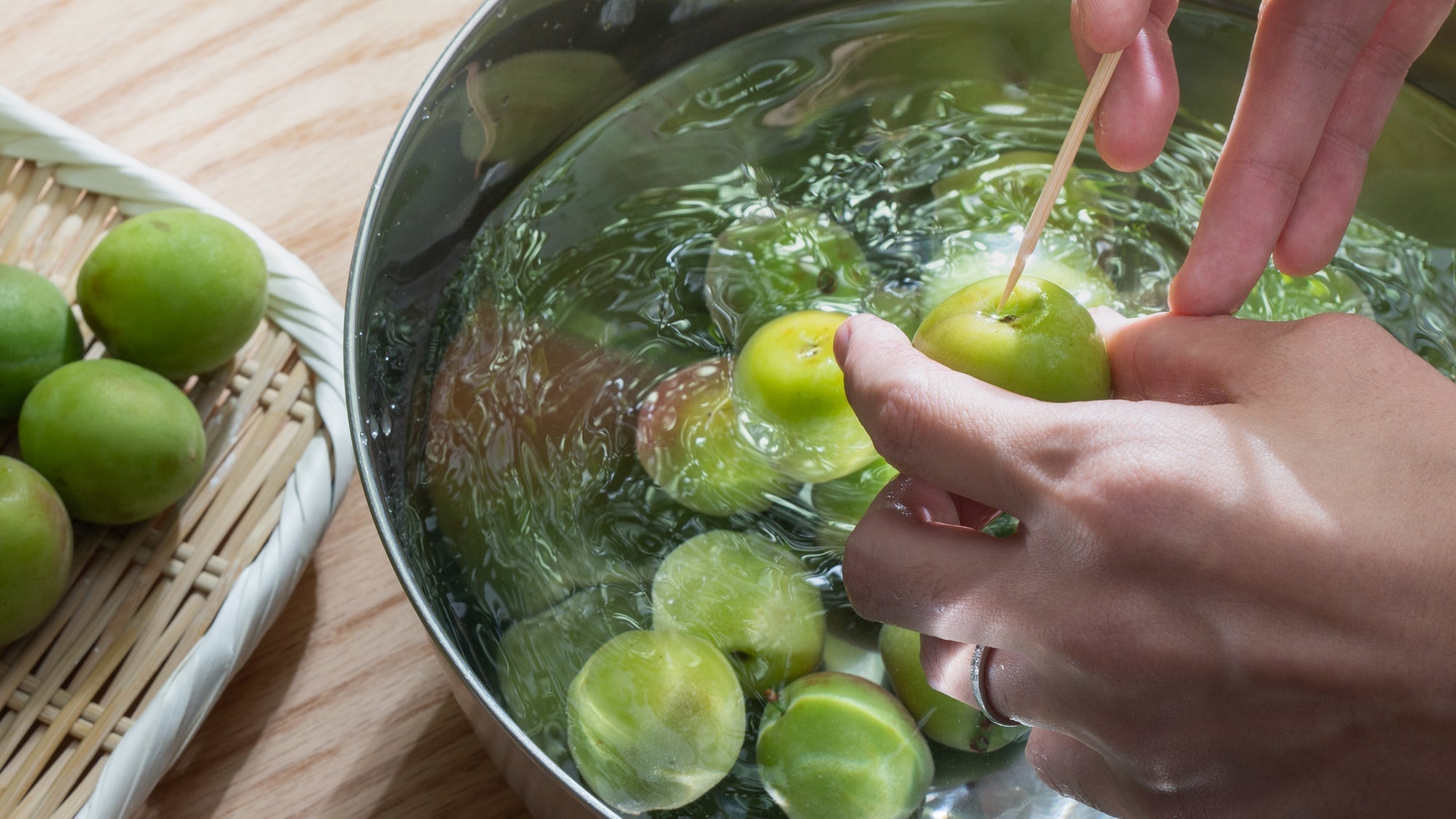
Japanese Plum Preparations: The Time-Honored Tradition of Ume Shigoto
Written by Tominaga Chiaki
Dive into our blog as we explore the intriguing world of "Ume Shigoto," a Japanese tradition that transforms the simple plum into a culinary delight. Join us in uncovering the cultural richness and captivating process of this enduring practice. Let's embark on this unique gastronomic journey together!
table of contents
What is "Ume," the Japanese Plum?

In fact, some Japanese living abroad use plums or apricots as a substitute for making "Umeboshi" (Japanese salted and dried plums) because they cannot obtain Japanese plums locally. Even though the aroma may be different, the texture and flavor are similar enough to suit their palates.
The Contemporary Preparation of Japanese Plums
Nowadays, given the availability of processed umes in supermarkets, changes in lifestyle, and the logistical challenge of growing a plum tree, fewer households engage in Ume Shigoto compared to the past. Nevertheless, this shift has nurtured a trend where those who do participate tend to do so with a distinctive sense of hobbyist passion.

The Personal Touch of Ume Shigoto

Each household cherishes its own unique take on umeboshi and umeshu. In my family, for instance, our umeboshi leaned toward the tart and salty, with scarcely any hint of sweetness. That's why even now, when buying umeboshi, I seek out the sharp tanginess and salty balance that I remember from my youth.
My grandmother used to make two versions of umeshu: one with shochu for a clean taste, and another with brandy for its unique depth and sweetness. The shochu version often accompanied meals, while the brandy version was more a slow-sipping, post-dinner indulgence.
Ume Shigoto was later passed down to my mother, but various factors such as typhoons and insects feasting on the umes made it difficult for her to continue the tradition. She turned to purchasing umes from supermarkets or grocers, opting to make the comparatively easy plum juice. It's a bit melancholy, marking the passage of time.
As for myself, the effort and time to invest in Ume Shigoto are indeed difficult to carve out. Nonetheless, I go to great lengths to procure my umeboshi from farmers committed to preserving traditional methods and utilizing no artificial additives. My go-to for umeshu is typically from established manufacturers like Choya. But on occasion, my travels lead me to stumble upon a delightful umeshu that I can't resist bringing home.

Our Upcoming Challenge Awaits
However, amongst the staff at Musubi Kiln, it was surprising to find that quite a few of them had parents who made umeboshi or had experienced it themselves.
This sparked an impromptu sharing of Ume Shigoto anecdotes, each tale unfurling into a rich blossom of shared memories. This led to an intriguing proposition—why not bring Ume Shigoto into the office?
Coincidentally, most of the staff gathered on that day of the Ume Shigoto were all inexperienced. What would be the result? We will report the results in our next blog. Please stay tuned!








Leave a comment
This site is protected by hCaptcha and the hCaptcha Privacy Policy and Terms of Service apply.